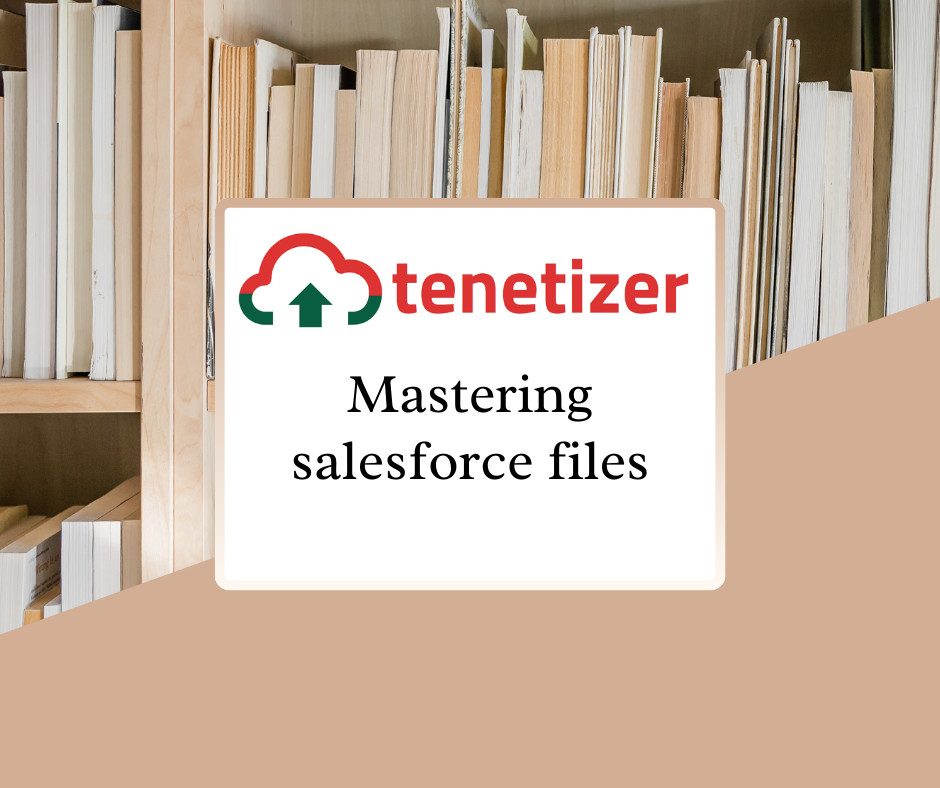Introduction:
Embarking on a Salesforce journey can be intricate, especially when dealing with the plethora of features it offers. One pivotal aspect that Salesforce developers, administrators, and architects frequently engage with is Files. In this comprehensive guide, Synebo engineers, drawing from their extensive experience, shed light on Salesforce Files, exploring their types, differences from Notes and Attachments, architectural intricacies, and development perspectives. Whether you’re new to Salesforce or a seasoned professional, this guide aims to provide insights into unleashing the full potential of Salesforce Files.
Chapter 1: Understanding Salesforce Files
1.1 What are Salesforce Files?
Salesforce Files serve as a centralized, cloud-based solution for storing and accessing various documents and multimedia files. Integrated throughout the Salesforce ecosystem, these files enable users to attach, collaborate, and securely share documents within and beyond their organization. This chapter delves into the types of files supported, their integration with Salesforce records, and collaboration features.
1.2 Difference Between Files vs Notes and Attachments in Salesforce
While Files offer versatility, Notes and Attachments focus on specific functionalities. This section provides an in-depth comparison, covering storage models, integration, type support, version control, collaboration features, and customization options. Understanding these distinctions is crucial for effective utilization in diverse scenarios.
1.2 Difference Between Files vs Notes and Attachments in Salesforce
While Files offer versatility, Notes and Attachments focus on specific functionalities. This section provides an in-depth comparison, covering storage models, integration, type support, version control, collaboration features, and customization options. Understanding these distinctions is crucial for effective utilization in diverse scenarios.
Chapter 2: Salesforce Files Architecture
2.1 Architecture Overview
Delving into the architecture of Salesforce Files, this chapter breaks down the key objects—ContentVersion, ContentDocument, ContentDocumentLink, ContentVersionHistory, ContentDocumentHistory, and Content Data Owner Object. Understanding the relationships between these objects is vital for developers working with files programmatically.
2.2 Development Perspectives: Back-End and Front-End
From a development perspective, this section provides code snippets and insights into creating, linking, and querying files in Salesforce. It covers the ContentVersion, ContentDocumentLink, and other objects, offering a practical guide for developers working on the back-end. Additionally, the front-end development perspective explores the lightning-file-upload component for user-friendly file uploads.
Chapter 3: Salesforce File Management: UI and Development
3.1 Navigating Salesforce File UI
Navigating the Salesforce admin environment for file management is crucial for users. This section guides administrators through the process of uploading, viewing, and managing files directly within the Salesforce UI. It covers actions such as file upload, download, sharing, and deletion.
3.2 Development Perspectives on File Upload
For developers, this section introduces the lightning-file-upload component, providing an easy way to integrate file upload functionality into custom UIs. With HTML and JavaScript code samples, developers gain insights into using this component for seamless file uploads while maintaining a consistent user experience.
Chapter 4: Sharings in Salesforce Files
This chapter explores the sharing features of Salesforce Files, focusing on privacy, sharing options, and the ContentDocumentLink object. It explains the nuances of ShareType and Visibility fields, shedding light on how these settings impact file visibility and accessibility within the Salesforce environment.

Chapter 5: Salesforce File Limits
Understanding the limitations and constraints related to Salesforce Files is crucial for optimal platform usage. This chapter delves into various limits, including file size, storage capacity, and Apex governor limits. Familiarity with these limits helps users and developers prevent unexpected errors and optimize their file management strategies.
Chapter 6: Navigating Salesforce File Challenges
Even with the robust capabilities of Salesforce Files, users may encounter challenges. This chapter addresses common issues such as versionData errors, API integration hurdles, and provides practical tips and solutions to overcome these obstacles. Navigating these challenges ensures a smooth and efficient file management experience.
Conclusion:
In conclusion, this comprehensive guide aims to empower Salesforce users, developers, and administrators with the knowledge and insights needed to harness the full potential of Salesforce Files. Whether you are a novice exploring the Salesforce ecosystem or an experienced professional seeking deeper insights, this guide serves as a valuable resource for mastering the intricacies of file management within Salesforce. For more details on implementation contact us through form below.

